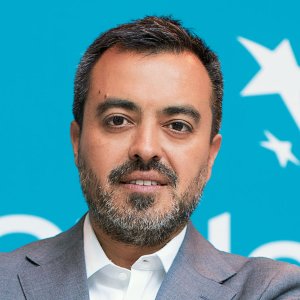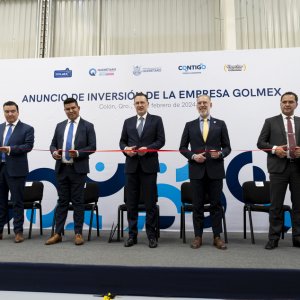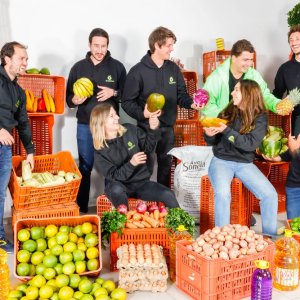Seeking opportunities in the global aquaculture industry

STORY INLINE POST
We rarely begin a relationship thinking about how it’s going to end; looking forward to the moment of farewell.
In the investment world, however, a clear exit strategy is often the missing piece that seals the deal. Investors, for the most part, are continually seeking “the golden ticket out” above everything else. Sure, there are particular preferences or sectors of interest, ranging from energy and materials to healthcare, infrastructure, and food production; but, above all, private equity firms, private investors, and venture capital firms seek value that has the potential to grow and business models that turn this growth into profit.
They are continually scanning the horizon for fledgling, promising ideas and innovation in need of capital, a network, and mentorship; all with the intent of parting ways once certain financial criteria are met or exceeded.
There is no definitive cookie-cutter solution when it comes to assessing potential investment options. Business propositions are a riddle full of complexities involving the application of cutting-edge technologies, highly specialized science and innovation, supply chain engineering, and financial control to deliver a competitive and novel market offer that provides value to consumers and generates financial gains for investors. Attempting to take a generic approach would limit any chances of identifying a winning business opportunity. This is especially true when it comes to young industries; a space where there is not yet an established framework that business models can be compared against.
Nevertheless, these are the greener pastures that investors are looking for, where the potential for growth lies unimpeded by direct competition and is backed by unmet consumer demands. There is, however, a trial by combat that businesses must endure in order to prove their effectiveness at delivering value to the markets while successfully mitigating risks and having sufficient expertise to do it at scale. This is exactly where entrepreneurs and business professionals in the aquaculture industry must leverage every single advantage to build a competitive business model to attract the right kind of investor with sufficient capital to fund the early stages of development and achieve scale economics; and with the added challenge of doing it while in the midst of an uncertain global economic scenario.
Despite this economic unpredictability, the first quarter of 2022 proved to be among the most promising periods for the global seafood industry, with notable acquisitions across the globe, including Cargill acquiring 24 percent of Chilean salmon producer Multi X and Profand's plans for expansion consolidating with its US$106.4 million purchase of Caladero as well as Kefalonia Fisheries for an undisclosed amount, just to name the most notable ones. This news coupled with the fact that global seafood sales climbed 2.8 percent at the beginning of the second quarter of this year even as consumer prices jumped an average of 13.5 percent during this same period sends strong signals to investors that investing in aquaculture is not only safe but actually favorable given its apparent resilience to global economic turmoil. This does not, however, immediately translate into more profits just yet as the cost of producing seafood has also been affected as collateral damage from the looming global recession.
With global inflation figures reaching 5.7 percent in advanced economies and 8.7 percent in developing economies, according to the International Monetary Fund, prices have increased significantly across the board. Consisting of approximately 50 percent of an aquaculture business' operating expenses, feed has seen a major hit due to the supply chain squeeze and global turmoil that has restricted the supply of fundamental ingredients. In a recent interview, Polarfeed executive and head of the feed production department, Carl-Erik Arsenen, expressed concerns about the price of feed potentially doubling in 2022, turning feed into a precarious choke point for production models and hence the economics of an aquaculture investment. This has in turn opened opportunities for countries like Mexico to bump up its place on the list of attractive investment regions around the globe by offering business models an array of opportunities to engineer cost structures that pick up the slack created by higher feed prices.
Mexico's position on the global stage has become increasingly competitive, currently occupying No. 35 out of 125 nations evaluated on the investment attractiveness index by IESE Business School, taking second place in Latin America, preceded only by Chile and holding a 12-spot lead ahead of Brazil. Mexico has achieved this privileged position thanks to a unique mix of characteristics that facilitate access to global markets through a hefty portfolio of free trade agreements, totaling 13 FTAs with over 50 countries, according to the latest figures from the International Trade Administration, opening up a unique window of opportunity for Mexico-based companies to enter key global seafood markets with competitive prices without having to cut away too aggressively at margins. The country's labor market, which offers ample skilled and experienced workers in the field of aquaculture, has become an ally of economic models and a critical component for financial performance. Acting as a buffer between inflating feed prices and profit margins, Mexico's labor market offers a unique economic incentive as the average wage hovers at about half the average EU and US wage as of 2020, allowing for ample elbow room to adjust accordingly to rising global inflation.
While the early stages of development in aquaculture are peppered with risks that are largely misunderstood by most investors, causing them to refrain from taking business propositions into serious consideration, we see strong signals at a global level, such as a consistent market demand backed by growing sales and increasing investment activity like the M&As that we saw at the start of this year. These signals will help investors gauge the level of maturity of the industry and indirectly understand if it is an opportunity, or a potential bust; no one wants to find themselves caught in a squeeze.
When looking at the competitive landscape, investors will undoubtedly be watching out for the potential to mitigate some of the most obvious and well-known risks as one of the fundamental elements of the coveted "golden ticket out," where investors will have an opportunity to liquidate options and cash out on their early buy-in.
As these recent events continue to unfold, we will see Mexico's position on the global stage progressively rise as a catalyst for business opportunities that fulfill their promise of financial growth for investors and economic development for the country.
In spite of the uncertain global economic outlook, there is a whole new chapter opening up in the history of Mexico’s economic development and the aquaculture industry, one that begins with the search for an end.
























